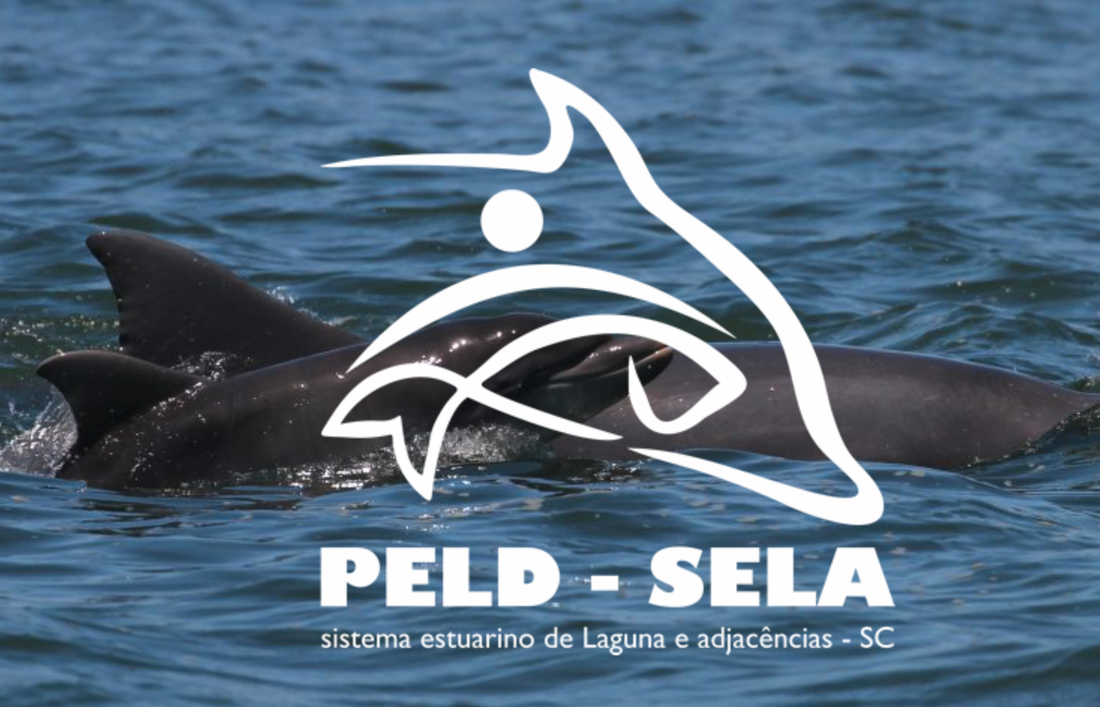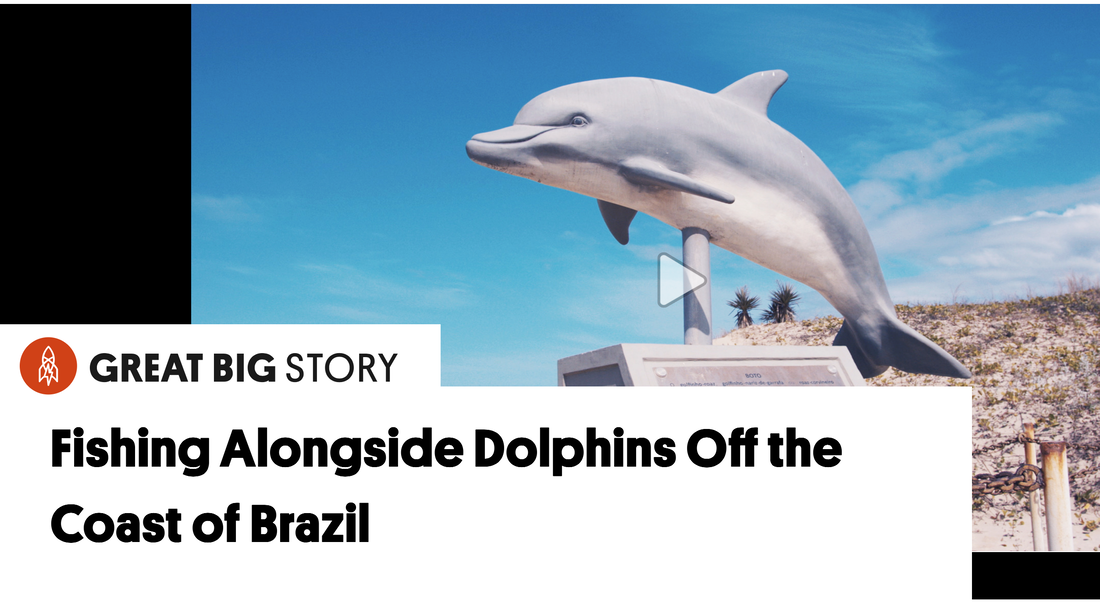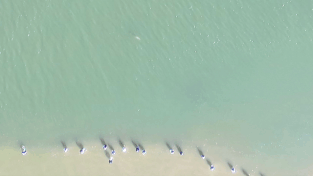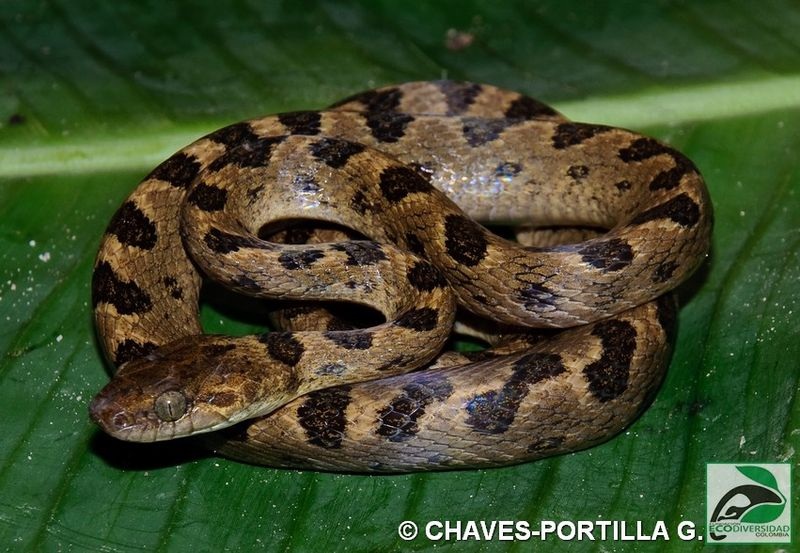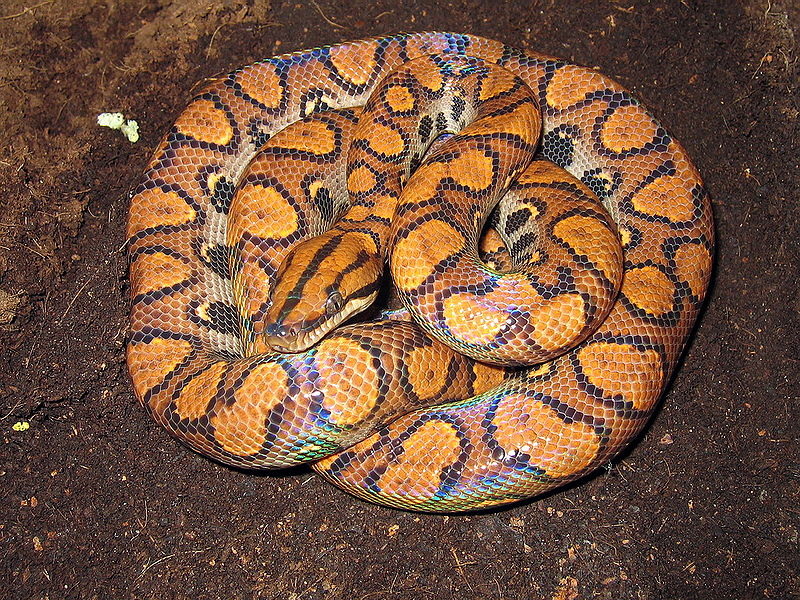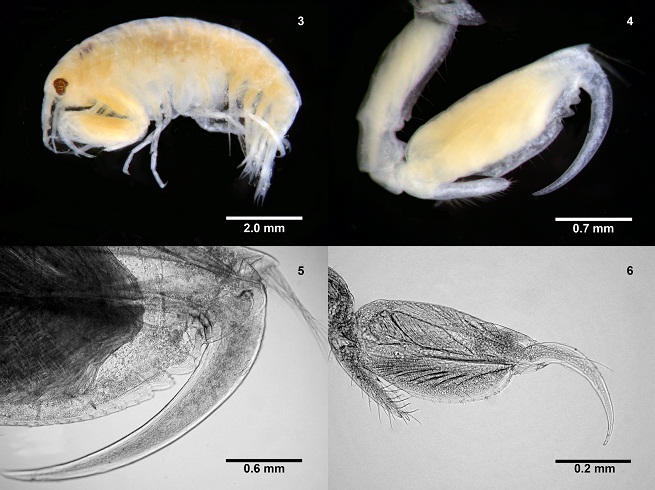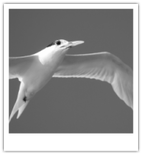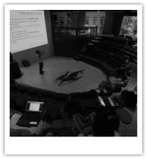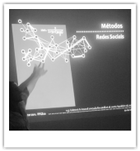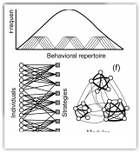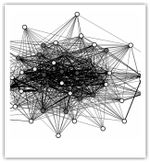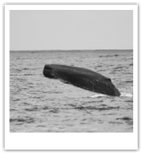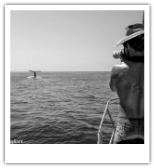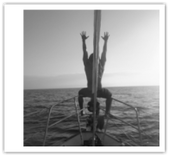The Wildlife Intelligence Project:
The ecology and evolution of cultural and cooperative behavior among dolphins and humans
2024-present
PI: Mauricio Cantor
co-PIs: Fabio Daura-Jorge, Damien Farine, Dipani Sutaria, Ignacio Moreno, Biju Kumar, Tint Tun
Partners: research teams at Universidade Federal de Santa Catarina, Universidade Estadual do Estado de Santa Catarina, Universidade Federal do Rio Grande do Sul, Australian National University, University of Zurich, University of Kerala, Indian Institute of Science
Learn more at the Wildlife Intelligence Project and @insidenatgeo @insidenatgeo @NationalGeographicSociety
PI: Mauricio Cantor
co-PIs: Fabio Daura-Jorge, Damien Farine, Dipani Sutaria, Ignacio Moreno, Biju Kumar, Tint Tun
Partners: research teams at Universidade Federal de Santa Catarina, Universidade Estadual do Estado de Santa Catarina, Universidade Federal do Rio Grande do Sul, Australian National University, University of Zurich, University of Kerala, Indian Institute of Science
Learn more at the Wildlife Intelligence Project and @insidenatgeo @insidenatgeo @NationalGeographicSociety
Project summary: One of the few cases of human-wildlife cooperation has been identified in separate cultural fishing practices involving both wild dolphins and humans. Emerging independently in Brazil, Myanmar and India, net-casting fishers and dolphins work together to catch fish, which benefits both the humans and wild dolphins. This unique human-wildlife interaction raises the key questions of how cooperative behaviors evolve in the wild and why this interaction is rare among different species. Working in these three places in the world where this cooperation still exists, our team will test if the same behavior has evolved in all three study locations; if the nature of all human-dolphin interactions is cooperative; and if there are specific ecological conditions that have contributed to the evolution of this human-dolphin cooperation. This project will also train local collaborators to establish long-term monitor ing of each human-dolphin system and will work to raise global awareness of the rare and declining cooperation between wild animals and humans.
Funded by: National Geographic Society
Made possible by: Templeton World Charity Foundation, The Jane Goodall Institute
Long-term ecological project (PELD/CAPES) The Laguna Estuarine System and Adjacent Areas
2021-present
PIs: Fábio Daura-Jorge, Mauricio Cantor, and 22 other Collaborators and Graduate students
Funding: CAPES-Brazil
This is a large collaborative research program from the Brazilian Ministry of Science and Technology to investigate the ecological drives, ecosystem and bioeconomic consequences of specialized cooperation between humans and dolphins. This is a 4-yr grant that involves about 30 researchers and graduate students from Brazil, some of whom I co-supervise.
PIs: Fábio Daura-Jorge, Mauricio Cantor, and 22 other Collaborators and Graduate students
Funding: CAPES-Brazil
This is a large collaborative research program from the Brazilian Ministry of Science and Technology to investigate the ecological drives, ecosystem and bioeconomic consequences of specialized cooperation between humans and dolphins. This is a 4-yr grant that involves about 30 researchers and graduate students from Brazil, some of whom I co-supervise.
Involving stakeholders to reduce the impact of lethal bather protection programs in South Africa
2018-present
PI and Graduate Students: Shanan Atkins, University of the Witwatersrand, South Africa
Supervisors: Prof. Neville Pillay, Mauricio Cantor
Through the work of my co-advised PhD student, Shanan Atkins, I am involved in a trans-disciplinary stakeholder engagement to find solutions to accelerate changing the use of shark nets and drumlines used to protect bathers in South Africa, because these methods have a high ecological cost — direct killing of sharks
PI and Graduate Students: Shanan Atkins, University of the Witwatersrand, South Africa
Supervisors: Prof. Neville Pillay, Mauricio Cantor
Through the work of my co-advised PhD student, Shanan Atkins, I am involved in a trans-disciplinary stakeholder engagement to find solutions to accelerate changing the use of shark nets and drumlines used to protect bathers in South Africa, because these methods have a high ecological cost — direct killing of sharks
Sperm whales off the Galápagos Islands: Population status, distribution, behaviour, and exposure to anthropogenic disturbances.
2021-present
PI: Hal Whitehead, Dalhousie University
Graduate Students: Ana Eguiguren
In collaboration to the long-term monitoring of the sperm whales led by Hal Whitehead of Dalhousie University (Canada), and currently by PhD student Ana Eguiguren of the same University. The overarching goal of the long-term monitoring is to assess the status of the different sperm whale vocal clans that use the Galápagos archipelago; we are now applying morphometric tools to measure body condition and fine-scale behavioral synchrony among male and female sperm whales.
PI: Hal Whitehead, Dalhousie University
Graduate Students: Ana Eguiguren
In collaboration to the long-term monitoring of the sperm whales led by Hal Whitehead of Dalhousie University (Canada), and currently by PhD student Ana Eguiguren of the same University. The overarching goal of the long-term monitoring is to assess the status of the different sperm whale vocal clans that use the Galápagos archipelago; we are now applying morphometric tools to measure body condition and fine-scale behavioral synchrony among male and female sperm whales.
Mechanisms and conservation of a rare human-animal cooperation
2017-present
PIs: Mauricio Cantor, Damien Farine, Fábio Daura-Jorge
Graduate Students: Alexandre Machado, João Valle-Pereira, Bruna Santos
Collaborators: Carolina Bezamat, Bianca Romeu, Pedro Castilho, Natalia Hanazaki, Paulo Simões-Lopes
Funding: CAPES-Brazil, DAAD-Germany, National Geographic
PIs: Mauricio Cantor, Damien Farine, Fábio Daura-Jorge
Graduate Students: Alexandre Machado, João Valle-Pereira, Bruna Santos
Collaborators: Carolina Bezamat, Bianca Romeu, Pedro Castilho, Natalia Hanazaki, Paulo Simões-Lopes
Funding: CAPES-Brazil, DAAD-Germany, National Geographic
Cryptic and complex interactions in cavity communities of the Mediterranean forest in a global change scenario: birds, ants and ectoparasites.
2021-present
I participate on a collaborative grant from the Ministerio de Ciencia e Innovación, Spain, as a researcher who contributes with data analyses of complex ecological networks in cavity communities in forests.
The project is led by the PIs Dr. Jesús M. Avilés Regodón and Dr. M. Deseada Parejo Mora.
I participate on a collaborative grant from the Ministerio de Ciencia e Innovación, Spain, as a researcher who contributes with data analyses of complex ecological networks in cavity communities in forests.
The project is led by the PIs Dr. Jesús M. Avilés Regodón and Dr. M. Deseada Parejo Mora.
|
O Observatório Covid-19 BR é uma iniciativa independente, fruto da colaboração entre pesquisadores com o desejo de contribuir para a disseminação de informação de qualidade baseada em dados atualizados e análises cientificamente embasadas.
Ongoing projects
Mauricio Cantor & Fabio Daura-Jorge
Dec 2016 on Postdoctoral research, Departamento de Ecologia e Zoologia, Universidade Federal de Santa Catarina, Brazil Funding: Conselho Nacional de Desenvolvimento Científico e Tecnológico (CNPq) Collaborators: Dr. Paulo C. Simões-Lopes, Universidade Federal de Santa Catarina, Brazil Dr. Damien Farine (Max Planck Institute for Ornithology, Germany; University of Konstanz, Germany) |
|
Concluded projects
On the interplay between society and culture: cause, consequence and stability of sperm whale clans
Mauricio Cantor & Hal Whitehead
May 2012 - Aug 2016 PhD research proposal Funding: Conselho Nacional de Desenvolvimento Científico e Tecnológico (CNPq), Killam Trusts (Canada) Supervisor: Dr. Hal Whitehead Supervisory Committee: Dr. Boris Worm (Reader), Dr. Glenn Crossin (Reader), Dr. Marty Leonard (Admission to Candidacy external member), Dr. Andrew Horn (Preliminary Exam external member), Dr. Louis Lefebvre (PhD defence external member; McGill University, Canada) In my research, I intend to describe, explain and predict three aspects of the interplay between social structure and culture in sperm whales: the behavioural mechanisms, fitness consequences and temporal stability. |
|
Monitoring the resident population of bottlenose dolphins of Laguna, south Brazil
Fábio G. Daura-Jorge, Paulo C. Simões-Lopes, Bianca Romeu, Daiana da Rosa, Mauricio Cantor
|
2007 - 2012
Objectives: Investigate multiple ecological aspects of this small population of Tursiops truncatus within which some individuals perform a unique behaviour: the cooperative foraging with artisanal fishermen. The monitoring aims to understand the interplay between this foraging technique and the population dynamics (using mark-recapture modeling), social patterns (using network theory and social analyses), space-use patterns (using kernel-based home-range methods), bioacoustic behavior and the origin and maintenance of the technique through social learning. Institutions involved: Universidade Federal de Santa Catarina, Universidade Estadua do Estado de Santa Catarina, Plymouth University (UK) Academic production: 1 PhD thesis, 5 peer-reviewed papers, 1 book, 3 undergraduate research projects. |
|
Funding: Conselho Nacional de Desenvolvimento Científico e Tecnológico (CNPq), Fundação de Amparo à Pesquisa e Inovação do Estado de Santa Catarina (FAPESC), Fundação O Boticário de Proteção à Natureza
Modelling the population and social dynamics of Guiana dolphins (Sotalia guianensis)
Mauricio Cantor, Leonardo L. Wedekin, Ariane Borges, Uilson Lixinha Farias, Fábio G. Daura-Jorge, Marcos Rossi-Santos, Thatiana Costa, Paulo R. Guimarães Jr., Paulo C. Simões-Lopes.
|
2009 - 2011
Master's degree research project By using mark-recapture models for closed and open population on a 8-year monitoring of Guiana dolphins at the Caravelas estuary (Brazil), we provided estimates of several population parameters (survival, emigration, population size, capture probability, abundance trends) (Cantor et al. 2012a). Using social structure modelling and network theory, we describe the social dynamics of the population and identify the mechanisms shaping their social interactions (Cantor et al. 2012b). Institutions involved: Instituto Baleia Jubarte, Universidade Federal de Santa Catarina, Universidade de São Paulo Academic production: 1 MSc thesis, 2 peer-reviewed papers, 3 scientific reports, 2 works and 2 oral presentations in international conferences, 3 taught courses, 4 invited lectures. |
|
Funding: Fibria (former Aracruz Celulose), Animal Behavior Society, Cetacean Society International, The Society for Marine Mammalogy, Cetacean Society International, Coordenação de Aperfeiçoamento de Pessoal de Nível Superior (MC M.Sc scholarship)
Assembling a puzzle with missing pieces: population and social dynamics of common bottlenose dolphins in a coastal insular habitat off Brazil
Liliane Lodi, Mauricio Cantor, Fábio Daura-Jorge, Cassiano Monteiro-Neto
2011 - 2012
Collaborative effort to understand the dynamics of the seasonal transient bottlenose dolphins that use the Cagarras Archipelago (Brazil) that have been studied by L. Lodi since 2004. We are estimating population parameters through mark-resight models and social structure, using network theory and other social analyses.
Institutions involved: Universidade Federal de Santa Catarina, Faculdades Integradas Maria Thereza (Brazil)
2011 - 2012
Collaborative effort to understand the dynamics of the seasonal transient bottlenose dolphins that use the Cagarras Archipelago (Brazil) that have been studied by L. Lodi since 2004. We are estimating population parameters through mark-resight models and social structure, using network theory and other social analyses.
Institutions involved: Universidade Federal de Santa Catarina, Faculdades Integradas Maria Thereza (Brazil)
Resource-use patterns in farming communities: implications for the resilience of an agriculturally networked system
Laura Cavechia, Mauricio Cantor, Alpina Begossi, Nivaldo Peroni
2009-2012
Cassava (Manihot esculenta Crantz) cultivated in swidden systems in two Brazilian coastal regions has been used here as a model to study the resource-use patterns of farmers. If farmers show pronounced differences in resource-use patterns, a network depicting their use of cassava ethnovarieties would be highly modular (with distinct subgroups). Alternatively, if a hierarchical pattern of resource use is observed, a nested structure may emerge from this heterogeneity, which would imply that some farmers cultivated several ethnovarieties and other farmers cultivated a less diverse, predictable subset of the available pool of those ethnovarieties. We are investigating how the relationships between farmers and how the structural resource-use patterns can be useful for inferring the resilience of agrobiodiversity exchange systems.
Institutions involved: Universidade Federal de Santa Catarina, Fisheries and Food Institute, Universidade Estadual de Campinas (Brazil)
2009-2012
Cassava (Manihot esculenta Crantz) cultivated in swidden systems in two Brazilian coastal regions has been used here as a model to study the resource-use patterns of farmers. If farmers show pronounced differences in resource-use patterns, a network depicting their use of cassava ethnovarieties would be highly modular (with distinct subgroups). Alternatively, if a hierarchical pattern of resource use is observed, a nested structure may emerge from this heterogeneity, which would imply that some farmers cultivated several ethnovarieties and other farmers cultivated a less diverse, predictable subset of the available pool of those ethnovarieties. We are investigating how the relationships between farmers and how the structural resource-use patterns can be useful for inferring the resilience of agrobiodiversity exchange systems.
Institutions involved: Universidade Federal de Santa Catarina, Fisheries and Food Institute, Universidade Estadual de Campinas (Brazil)
Influence of piers on benthic primary producers and consumers functional groups in a subtropical coastal lagoon channel
Paulo Pagliosa, Paulo A. Horta, Alessandra Fonseca, Mauricio Cantor, Fernando Scherner, Marinana Otegui, Aurea Luiza Lemes-da-Silva, Cíntia Martins, Talita Vieira-Pinto, Manuela Bernardes Batista, Giorgia Freitas, Fernanda Vital.
2009 - 2010
Artificial habitats have become common in coastal areas worldwide and may influence the structure and functioning of benthic ecosystems. We analyze the influence of piers on the benthic morphofunctional groups of rocky seaweeds and of soft bottom macrofauna in southern Brazil. Our results showed that the piers might have a negative effect on the base-trophic level organisms responsible for bottom-up controls.
Institutions involved: Universidade Federal de Santa Catarina, Nucleo de Estudos do Mar (Brazil)
Academic production: 1 paper
2009 - 2010
Artificial habitats have become common in coastal areas worldwide and may influence the structure and functioning of benthic ecosystems. We analyze the influence of piers on the benthic morphofunctional groups of rocky seaweeds and of soft bottom macrofauna in southern Brazil. Our results showed that the piers might have a negative effect on the base-trophic level organisms responsible for bottom-up controls.
Institutions involved: Universidade Federal de Santa Catarina, Nucleo de Estudos do Mar (Brazil)
Academic production: 1 paper
Behavioral Reactions of Wintering Humpback Whales (Megaptera novaeangliae) to Biopsy Sampling in Western South Atlantic
Mauricio Cantor, Taiana Cachuba, Luena Fernandes, Márcia H. Engel
|
2008 - 2009
Molecular analysis has become a powerful tool in cetacean ecology. Remote biopsy sampling is the most efficient method to obtain epithelial material for analysis purposes. However, as an intrusive technique it presents inherent costs, evidenced by behavioral reactions. Clarifying which factors influence these responses is essential to assess its impact and prevent possible long-term effects. For 11 winters, samples from humpback whales were collected in the Abrolhos Bank, the main breeding ground of this species in the western South Atlantic. We analysed the influence of several characteristics of the shot, vessels, groups and behavior on the frequency and intensity of the whales’ response. The majority of biopsied whales did not show any detectable response. Among those that responded, a low-level category of reaction was most frequent. This study reinforces existing evidence that biopsy sampling is unlikely to have long-term effects. Institution involved: Instituto Baleia Jubarte, Brazil. Academic production: 1 paper, 1 undergraduate research project Funding: Petrobras Ambiental |
|
Small mammals in urban Atlantic forest fragments
Eleonore ZF Setz, Mauricio Cantor, Clara Piccininni, Michelle Santos-Rondon, Camila Castilho, André deMarco, Wesley R Silva.
|
2012 - present
In collaboration with M Santos-Rondon and EZF Setz (UNICAMP), we are using network theory to explore the interactions between individual white-eared opossum and their parasites. 2009 - 2011 (concluded) In a collaborative project with MM Pires (USP), GO Longo (UFSC) and PR Guimarães (USP), we used a network approach, widely used to understand how seed-dispersal is organized at the species level, to study the individual fruit consumption behavior of Didelphis albiventris. Because generalist populations may be comprised of specialized individuals, we hypothesized that network structural properties, such as nestedness, should also emerge at the individual level, which would reveal intrapopulational variation in frugivory and imply in consequences for ecological services, such as seed dispersal. Read more 2007 - 2008 (concluded) Collaborative undergraduate research project with C Piccininni. Population dynamics modeling of white-eared opossum through mark-recapture methods 2006 - 2007 (concluded) Undergraduate research project Small mammals (especially white-eared opossum Didelphis albiventris) as seed dispersers of native plants in a urban park within a Atlantic forest area. We identified the seeds and evaluated the germination performance. |
|
Institutions involved: Universidade Estadual de Campinas (Brazil), SUCEN
Academic production: 3 papers (1 submitted, 1 in prep), 2 undergraduate research projects, 1 PhD thesis
Funding: SAE UNICAMP undergraduate research scholarship (PIBIC).
Academic production: 3 papers (1 submitted, 1 in prep), 2 undergraduate research projects, 1 PhD thesis
Funding: SAE UNICAMP undergraduate research scholarship (PIBIC).
Reproductive biology of snakes
Ligia Pizzatto do Prado, Mauricio Cantor, Otávio AV Marques
|
2005 - 2005 (concluded)
Undergraduate research project Reproductive biology and diet of Leptodeira annulata (Serpentes, Colubridae, Dipsadini). The dissection of specimens deposited in scientific collections allowed us to study the reproductive cycles (Pizzato et al. 2008) and diet (Cantor & Pizzatto 2008) of Dipsadini snakes. This project was part of a broader research project coordinated by L. Pizzatto: A relatively large amount of variation occurs in the reproductive ecology of tropical snakes, and this variation is generally regarded as being a consequence of seasonality in climate and prey availability. In some groups, even closely related species may differ in their reproductive ecology; however, in others it seems to be very conservative. We explored whether characters related to reproduction are phylogenetically constrained in a monophyletic group of snakes, the subfamily Dipsadinae, which ranges from Mexico to southern South America. 2004-2005 (concluded)
Undergraduate research project Reproductive biology of Epicrates cenchria cenchria (Serpentes, Boidae) in Brazil We described the length of follicular and testicular cycles, sexual maturity, recruitment, body size, and diet of Epicrates cenchria cenchria using specimens deposited in scientific collections. This project was part of the PhD thesis of L. Pizzatto. Academic production: 2 papers, 2 undergraduate projects
Institutions involved: Universidade Estadual de Campinas (Brazil), Instituto Butantan (Brazil) Funding: Conselho Nacional de Desenvolvimento Científico e Tecnológico (CNPq scholarship) |
photo by: Wikipedia nl.wikipedia.org/wiki/Bestand:EpicratesCenchriaCenchria1.jpg
|
Abundance of the amphipod Leucothoe spinicarpa in the ascidian Phallusia nigra in Southeastern Brazil
Mauricio Cantor, Silvana GL Siqueira, Gabriela T Cruvinel, Fosca PP Leite
|
2003 - 2004 (concluded)
Solitary ascidians are stable microhabitats potentially favorable for feeding, shelter and reproduction of amphipods. The occurrence and size range of Leucothoe spinicarpa, the symbiotic species of the solitary ascidian Phallusia nigra, was evaluated at Praia da Enseada, Ubatuba, Northern coast of São Paulo State. The number of amphipods in each ascidian varied and there were few adults in opposition to a high number of juveniles. Males and females did not show difference in body size, but sexual dimorphism based on excavation of gnathopod and dactylus proportion was presented. Also, the ascidian weight was related with the number of associated adult amphipods but not with the juveniles. The high number and size range distribution of juveniles, the low number of ovigerous females, and even the presence of single adult in the ascidians, suggest the possibility of extended parental care. |
Institutions involved: Universidade Estadual de Campinas (Brazil), CEBIMAR USP (Brazil)
Academic production: 1 paper
Academic production: 1 paper
Home
|
Academic Record
|
Publications
|
Professional
|
CV
|
